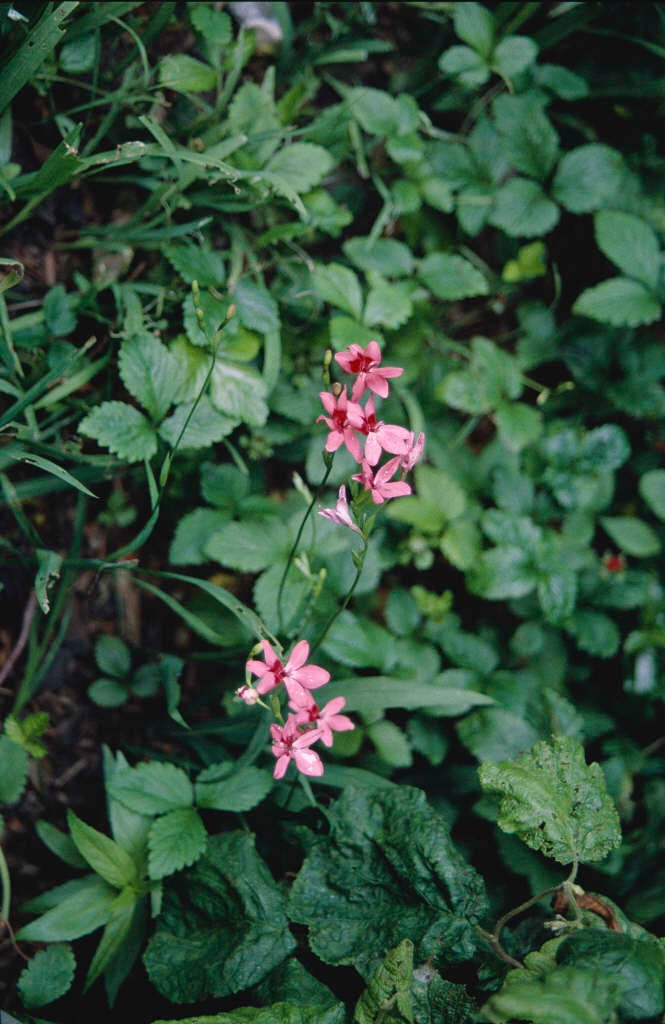Freesia laxa
flowering grass
A slender perennial growing from a small corm, with erect, sword-like leaves and, in early summer, sprays of salmon-red flowers with darker spots on the lower 3 petals
Size
Ultimate height
0.1–0.5 metresTime to ultimate height
1–2 yearsUltimate spread
0–0.1 metreGrowing conditions
Moisture
Well–drainedpH
Acid, NeutralColour & scent
| Stem | Flower | Foliage | Fruit | |
| Spring | ||||
|---|---|---|---|---|
| Summer | Red | Green | ||
| Autumn | ||||
| Winter |
Position
- Full sun
Aspect
South–facing
Exposure
Sheltered Hardiness
H3Botanical details
- Family
- Iridaceae
- Native to GB / Ireland
- No
- Foliage
- Deciduous
- Habit
- Columnar upright
- Genus
Freesia are cormous deciduous perennials with erect, linear to narrowly lance-shaped leaves and upright stems bearing terminal racemes of slender-tubed, salver-shaped or trumpet-shaped flowers that are usually scented
- Name status
Correct
- Plant range
- Kenya to South Africa
How to grow
Cultivation
Plant corms in spring 5cm deep (2in) in full light. In the growing season, water moderately and apply a balanced liquid fertiliser monthly. When dormant, the corms need to be kept completely dry
Propagation
Propagate by seed at 13-16°C (55-61°F) in spring. Can also be propagated by division in spring and the seedlings should flower after two years
Suggested planting locations and garden types
- Cottage and informal garden
- City and courtyard gardens
- Coastal
- Gravel garden
- Flower borders and beds
- Wall side borders
Pruning
No pruning required
Pests
Generally pest-free
Diseases
Generally disease-free
Get involved
The Royal Horticultural Society is the UK’s leading gardening charity. We aim to enrich everyone’s life through plants, and make the UK a greener and more beautiful place.
